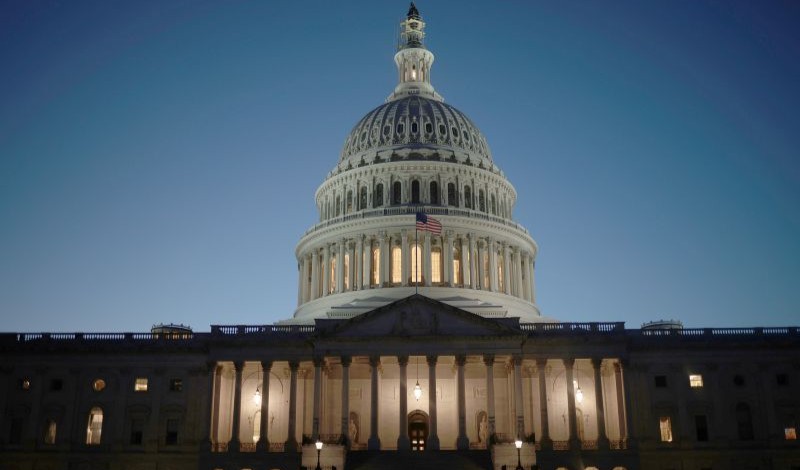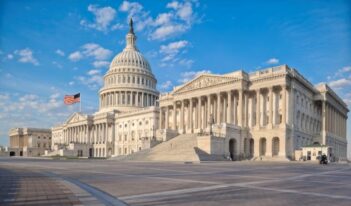
The recently enacted megalaw is expected to restrict access to Medicaid and marketplace health insurance to millions of individuals.
Most advocates of the so-called Big Beautiful Bill recently passed by the U.S. Congress pitched it as a major form of tax relief. But it is also poised to unsettle the landscape of health insurance in the United States. One health policy expert described this megalaw as “the most consequential health care legislation since the Affordable Care Act (ACA)” and “the most conservative health policy reform in at least a generation.”
The megalaw makes $1.1 trillion in cuts to both Medicaid and the ACA health insurance marketplaces. According to the Congressional Budget Office, the law will cause 10 million people to lose coverage by 2034. Experts project that an additional 4 million marketplace consumers will soon lose coverage when enhanced marketplace subsidies that Congress had extended in 2022 expire at the end of 2025, since legislators did not extend them again in the recent megalaw.
The law will reshape two critical pathways for accessing health insurance: (1) Medicaid eligibility, and (2) the marketplaces that the ACA established to facilitate the purchase of private coverage.
Starting with Medicaid, the legislation imposes more obstacles to enrolling in the program. Beginning in 2027, states must verify that enrollees satisfy a new work requirement, a condition for ongoing Medicaid eligibility that enrollees can meet through employment, participation in qualifying education programs, or other related activities for at least 80 hours per month. Some scholars defend these work requirements by drawing on welfare reform data to argue that minimum work or community engagement requirements can increase income and reduce poverty among groups subject to such requirements.
The law also requires states to reassess Medicaid eligibility for certain low-income adults every six months, rather than once per year. This requirement will target adults with incomes up to 138 percent of the federal poverty line—a population that the ACA made eligible for Medicaid in states that opted to expand their programs.
As for the ACA health insurance marketplaces, consumers will also face new restrictions. Starting in 2026, consumers will be barred from receiving federal tax credits if they apply for coverage through a special enrollment period during which marketplaces offer additional enrollment opportunities for certain low-income individuals. The law will also exclude certain lawfully present immigrants from eligibility for federal tax credits, a population that previously qualified for subsidized coverage under a statutory exemption for individuals with incomes below 100 percent of the federal poverty line.
By 2028, the law will prevent existing ACA marketplaces consumers from automatically re-enrolling in their health plans. Departing from current, streamlined application processes, the legislation also alters existing enrollment procedures, including by requiring marketplace consumers to provide documentation that was previously verified by third-party entities and conditioning access to federal subsidies on the completion of pre-enrollment verification.
Supporters of the legislation emphasize that it aims at “preventing wasteful spending” and “stopping abusive financing practices.” Proponents also cite longstanding concerns that improper payments and fraudulent enrollments have compromised the integrity of federally funded health insurance.
The Trump Administration promises that “there will be no cuts to Medicaid” under the law, framing its Medicaid provisions as measures that will strengthen the program by “eliminating waste, fraud, and abuse.” To justify this approach, the Administration relies on reports from the Centers for Medicare and Medicaid Services (CMS) finding that “improper payments for Medicaid have exceeded half a trillion dollars” in the last decade.
Proponents offer other data to justify the law’s focus on eliminating fraud associated with the ACA marketplaces. For example, Paragon Health Institute estimates that between 4 and 5 million consumers were “improperly” enrolled in marketplace coverage in 2024, costing the federal government upwards of $15 billion. CMS cites these figures repeatedly in a final rule it adopted in June that seeks to eliminate “imminent program integrity problems.” This regulation includes several policies that Congress codified in the megalaw.
Opponents counter that the law’s Medicaid and ACA marketplace measures place unfair burdens on beneficiaries rather than addressing the root causes of fraud and wasteful spending.
Some experts explain, for example, that most Medicaid fraud originates with health care providers. They argue that Medicaid work requirements function primarily as unnecessary barriers to access by filtering out enrollees who get “caught up in administrative burdens and red tape.” One recent poll found that, when survey respondents were informed that “the majority of Medicaid recipients are already working,” support for work requirements fell from 68 percent to as low as 35 percent.
Marketplace insurance experts also challenge the methodology underlying the data that the Trump Administration relies on to document the prevalence of improper enrollments initiated by consumers. These experts argue that CMS has misplaced its focus on subsidized consumers despite recognizing previously that unauthorized activity by agents and brokers is a major driver of marketplace fraud. Critics argue that, by focusing on consumers as the source of fraud and waste, the Administration’s policies—some of which were included and broadened in the megalaw—penalize marketplace consumers in the name of program integrity while leaving the underlying issues unresolved.
The effects of the new megalaw remain uncertain. A recent district court decision temporarily halted the implementation of CMS’s ACA regulations, which would have imposed marketplace restrictions before similar provisions in law start to take effect. The upcoming congressional battle over the federal budget, as well as the 2026 midterm elections, may also result in future legislative changes that modify the provisions in the megalaw. Although legislators did not extend the enhanced marketplace subsidies in the legislation, ten Republican members of the U.S. House of Representatives recently introduced a bill that would extend the subsides by one year, which has been described as an effort to punt “the issue past the 2026 midterms.” But the recent government shutdown may undermine this effort.
For now, the legislation marks a fundamental shift in federal health policy. Supporters view the megalaw as a tool to promote accountability and address improper, wasteful health care spending. Opponents see it as an erosion of the ACA’s protections that will cost millions of Americans their health care coverage. Across the ideological spectrum, policymakers will likely confront new political ramifications if millions do start to lose their insurance once the megalaw’s health care provisions take effect.



